
In 1981, spaceflight changed forever with the launch of the first manned reusable spacecraft – the Space Shuttle Colombia. Born into the twilight years of the Apollo missions, the Shuttle was the delta-winged symbol of space travel I grew up with, and over the decades I watched its highs and lows – including witnessing the maiden launch of STS-49 Endeavour, one of the most incredible experiences of my life – and I followed the flights until the program was retired in 2011.
So it’s no surprise, with the heyday of the Shuttle program overlapping with the 80s-90s golden age of techno thrillers, that there’s a sub-genre of novels featuring NASA’s iconic Orbiter emblazoned across their covers.
Space Age thrillers didn’t start with the Shuttle – Martin Caidin’s Marooned and The Pilgrim Project by Hank Searls (both 1965) are two great examples published before the Moon landing – but it’s undeniable the Shuttle captured the imagination of writers.

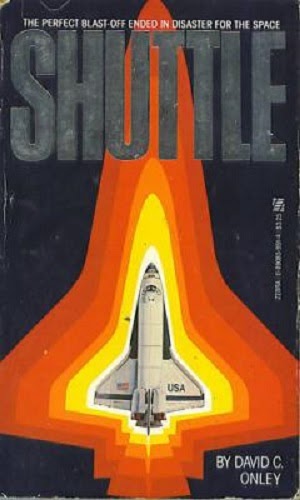

One the earliest iterations I’ve come across of a Space Shuttle playing a key role in a techno thriller narrative is in The Dynostar Menace (1975) by Kit Pedler and Gerry Davis (two names well-known to fans of Doctor Who), a novel about sabotage and murder aboard an orbiting space-lab, written two years before the real Shuttle began its flight tests – but it’s Christopher Wood’s adaptation of the James Bond movie Moonraker (1979) that really kicks off Shuttle stories with a bang! Wood’s tie-in follows the film (leaving the Ian Fleming origin material by the wayside) in a story about megalomaniac Hugo Drax’s plan to use a fleet of Shuttles as part of a scheme to depopulate the world.
I’ve found that most Shuttle-centric novels fall into one of four categories: the first is the disaster story, where something goes horribly wrong and the clock is running down to something even worse. Scott Asnin’s story A Cold Wind From Orion (1980) has the titular space platform and its nuclear payload trapped in a decaying orbit as Shuttle crews race to the rescue, while Lee Correy’s novel Shuttle Down (1980) deals with a failed launch that forces the Shuttle Atlantis to make an emergency landing on Easter Island. Correy’s novel shares its title with a 2007 Commando comic story and a 2000 novel in the Chopper Ops series by Mack Maloney, both of which also feature Shuttles making forced landings.
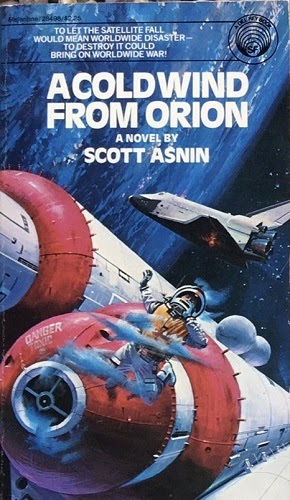
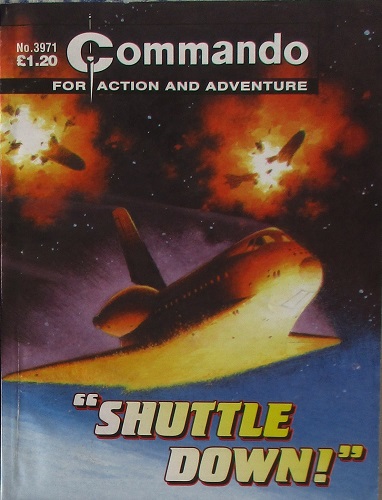

It’s the Orbiter itself in danger in David C. Onley’s Shuttle (1981) as mission control mounts a mid-flight recovery, and Alpha Bug (1987) by M.E. Morris also features an on-orbit rescue mission, this time for a Soviet spaceplane. John-Allen Price wrote his take on a similar plotline in The Pursuit of the Phoenix (1990), where an American commander and a crew of untested trainees must rescue stranded cosmonauts.

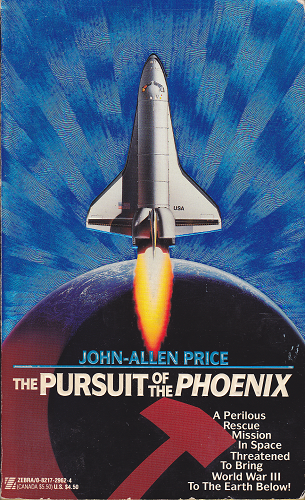
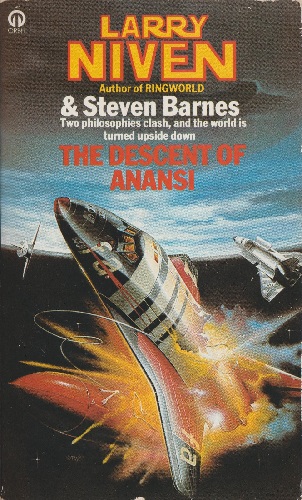
Price’s follow-up to Pursuit nicely illustrates the second Shuttle novel category: the hijack story. In Phoenix Uncaged (1993), the Shuttle crew (once again) make an emergency landing, this time in the Marxist-controlled Seychelles where they are accused of spying and their ship is to be auctioned off to Libya. One of the earliest ‘hijack’ stories is a great piece of tech-heavy hard sci-fi in The Descent of Anansi (1982) by Larry Niven & Steven Barnes; in this novel, the crew of an orbital factory manufacturing super-strong ‘nanowire’ declare independence and hijack the Shuttle Anansi and its crew – but the astronauts hatch a plan to emulate the shuttle’s spider-god namesake using orbital tethers to escape their captors.
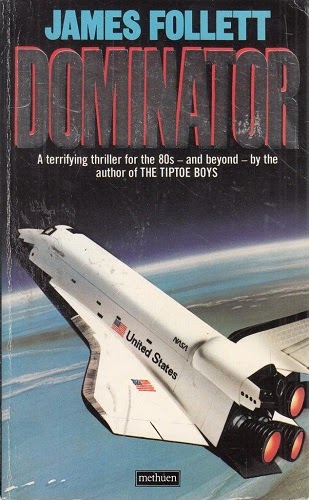
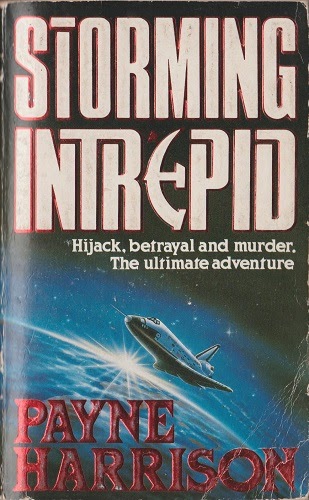

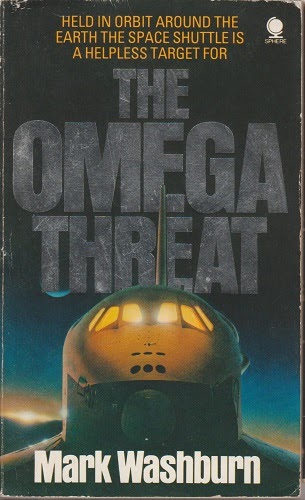
In James Follett’s Dominator (1985), the titular Shuttle’s cargo and crew are held for ransom, a theme revisited with gusto in Storming Intrepid (1988) by Payne Harrison, and Night Launch (1989), which is the only novel featured here written by an actual astronaut, Jake Garn, along with co-author Stephen Paul Cohen. Mark Washburn’s The Omega Threat (1982) follows the hijack model but with a hidden bomb aboard an orbiting Shuttle, while Ignition (1988) by Kevin J. Anderson and Doug Beason, has the Shuttle Atlantis is trapped on the launch pad when terrorists take over mission control, setting off a deadly countdown to blow it up unless their demands are met.

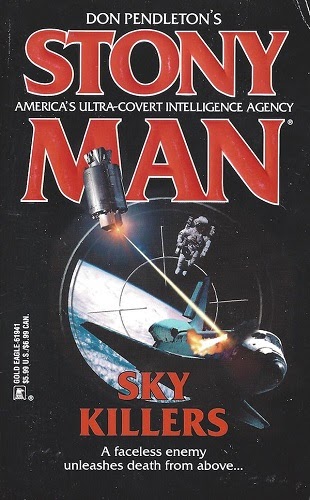
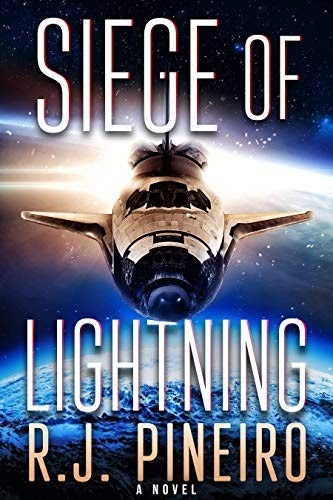
The third category of Shuttle thrillers is the sabotage story, and for this we can begin by going back to 80’s with the long-running, two-fisted Nick Carter: Killmaster pulp series and The Solar Menace (1980), where Shuttle launches are being sabotaged by Russian agents to protect a diabolical new weapon. A second Killmaster story – Death Orbit (1986) – has Carter back on the trail of move Soviet saboteurs, and Shuttles also feature in a couple of other “men’s adventure” series: Revenge of the Master (1985), an entry in the Track series by Jerry Ahern and Sky Killers (2002) by Nick Pollotta, from Don Pendleton’s Stony Man series. S.V. Date’s Final Orbit (1997) features an acerbic veteran astronaut chasing down murders and a cover-up in orbit with a killer, while Siege of Lightning by R.J. Pineiro (1993) deals with industrial espionage and the fatal threat of sabotage during a Shuttle’s maiden voyage.
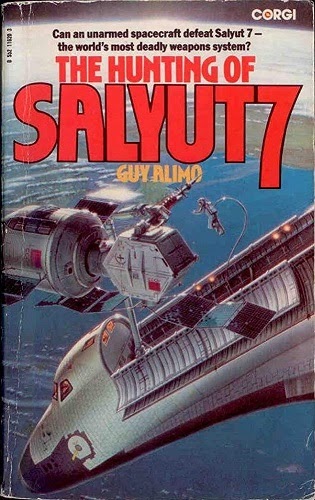
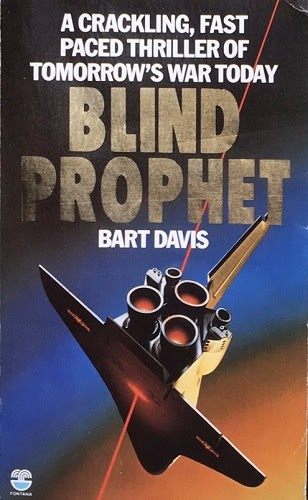
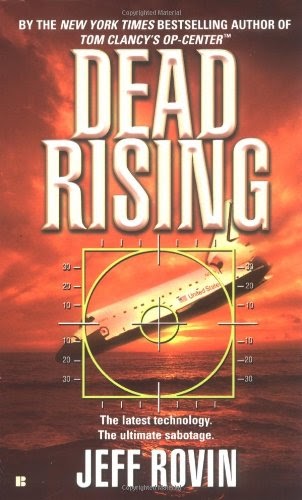
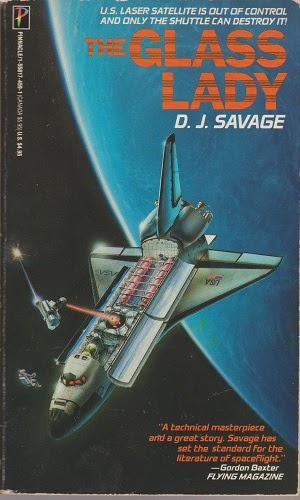
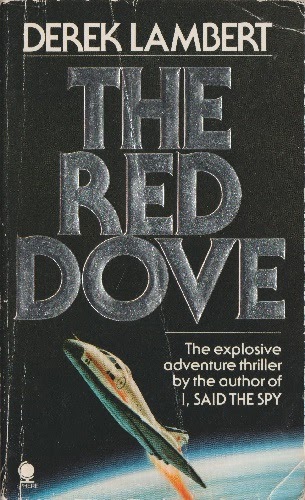
The fourth category ties into another 80’s techno thriller gimmick, the “Star Wars” Strategic Defence Initiative program; that promised to deter nuclear ICBMs, but in reality proved to be technologically infeasible. In several of these novels, it’s up to fearless Shuttle astronauts to face down SDI weapons, sometimes under the control of the Soviets (1981’s The Hunting of Salyut 7 by Brendan Guy Alimo, 1983’s Blind Prophet by Bart Davis, 1987’s Winter Hawk by Craig Thomas, 1989’s Star Shot by Douglas Terman), operated by terrorists (2005’s Dead Rising by Jeff Rovin) or US tech gone rogue (1985’s The Glass Lady by D.J. Savage). Other “war in space” elements appear in Derek Lambert’s The Red Dove (1983), with nuclear-armed Russian Shuttles and orbital laser battle-stations in Dale Brown’s Silver Tower (1988).
This blog is more a tour through some of my own collection than an exhaustive list of Shuttle novels, so feel free to drop me a line if you know of one I’ve missed!


